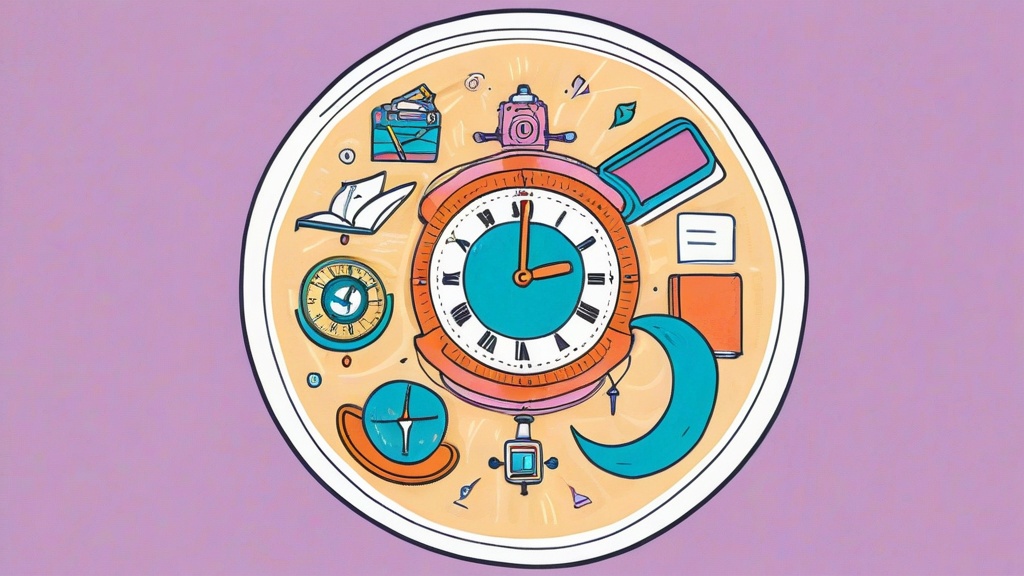People tell me I take rest “too seriously,” which is funny because most folks don’t take it seriously at all. In my experience, when you actually enjoy your time off, everything else gets easier—work, health, mood, even that nagging feeling behind your eyes. I’m talking simple downtime. Real leisure. A vacation if you can swing it. A short break if you can’t. Weekends that aren’t swallowed by laundry and panic. I’ve always found that when I plan my rest even a little, I get less stress, less burnout, more energy, and—shocker—better productivity when I come back. LSI list so we’re clear: relaxation, free time, hobbies, mental health, recharge, boundary setting, digital detox, and not being a hero. Let’s start there.
Who am I to talk about time off?

I’ve spent over a decade studying, testing, and teaching rest. Not the Instagram version. The boring version that actually works. I’ve run team workshops on work-life balance and watched people nod while secretly checking email under the table. I’ve coached executives who “can’t take a day off” but somehow have time for four daily status meetings. And yes, I’ve hosted the dreaded “self-care lunch-and-learn”—which is corporate for “we’d like you to relax, but during lunch, and please keep your camera on.”
What I think is simple: time off is a skill. You build it. You protect it. You use it like a tool. I treat free time the way a chef treats sharp knives. Respect it or you’ll bleed.
The real problem isn’t time. It’s permission.
You’re busy. I get it. I’m busy too. But most of us could step away more than we do. The issue isn’t the calendar; it’s guilt. The tiny voice that says, “You should probably check your messages, just in case.” Look, I’ve worked in places with “unlimited PTO,” which is code for “you’ll feel bad taking it.” If that’s you, I see you. You probably need rules, not vibes.
Unlimited PTO is the office version of a “trust fall”
- It sounds generous. It feels like a trap.
- People take less, not more, because no one knows what’s “normal.”
- Fix: set a personal quota. Example: I take one long week and two short breaks every year. I announce it early. As if it’s already decided. Because it is.
The Slack phantom limb
I’ve always found that when I delete work apps on day one of a break, my brain makes a weird ghost vibration for about 36 hours. Then it stops. I breathe, and I realize I’ve been low-level tense for months. If you can’t delete, fine. Log out. Move the app to a hidden screen. Turn off badges. Put your phone in airplane mode for an hour. Then two. Build up like you’re training for a marathon, except the marathon is doing nothing, on purpose.
A minimum viable plan for stepping away
Rest fails when it’s “winged.” I like a tiny plan. Not a spreadsheet. A napkin plan. Think of it as a tiny protocol. Simple steps. Low friction.
Before-the-break checklist (10 minutes)
- Tell people early. “I’ll be OOO Thu–Fri. If you need X, talk to Y.” Done.
- Park your work. One doc, top three to-dos, and next steps. Future You will thank Past You.
- Set an out-of-office that actually sets a boundary. More on that below.
- Decide one anchor activity for each day: a walk, a meal with someone, a small project, or just reading. Not a “schedule.” Just an anchor.
- Prep at home: groceries, laundry, meds, chargers. Tiny annoyances kill good rest.
During-the-break principles
- Move your body a little. It helps your brain stop spinning (science is loud about this).
- Go outside at least once a day. Light resets your mood, and it’s free.
- Set a “tech window.” If you must check devices, confine it. Noon for 20 minutes, for example.
- Make space for boredom. That’s where ideas sneak in when they think you’re not looking.
By the way, if you’re wondering what a “vacation” even means beyond airline snacks, here’s a simple overview that I send to clients sometimes: what a vacation actually is. It’s not fancy. It’s a break from work. That’s it. Don’t overthink it.
Micro-breaks vs. macro-breaks
I use both. Tiny breaks keep me sane. Big breaks reset the whole system. Here’s a quick snapshot you can steal.
| Type | Length | What I Do | Why It Works |
|---|---|---|---|
| Micro-break | 5–15 minutes | Stretch, window stare, tea, 10 push-ups, breathe | Resets attention, lowers stress hormones fast |
| Mini-break | 60–90 minutes | Walk, lunch outside, quick nap, hobby sprint | Clears mental cache without ruining your day schedule |
| Medium break | Half-day | No meetings, deep rest, nature, read a short book | Gives your brain a real cycle change |
| Macro-break | 2–7 days | Travel light, sleep in, slow mornings, no “productivity” | Full reset; perspective returns like a boomerang |
How I actually spend my days off (field notes, not theory)
I’ll give you two real scripts I use. No fluff. Just what works for me after years of practice and failure.
Script A: A random weekday off
- 8:00 AM: Phone face-down in a drawer. I make coffee. Stare at a tree. Breathe.
- 9:00 AM: Light chores for 20 minutes. It’s amazing how much brain noise vanishes when dishes are done.
- 10:00 AM: Walk for 40 minutes. No music. Sometimes I count colors. Blue car, green sign, done.
- 11:00 AM: Fun hour. Sketch, play guitar badly, tinker. I set a timer so I don’t “accidentally” check email.
- 12:30 PM: Eat something colorful. Then nap like a cat in a sunspot.
- 2:00 PM: One human thing. Talk to a friend. Visit a bookstore. Smile at a dog. Whatever.
- 4:00 PM: Quiet reading. Fiction if my brain won’t stop being a spreadsheet.
- 5:30 PM: Prep a simple dinner. Chop vegetables slowly. Therapeutic.
- 7:30 PM: Light TV. Nothing “important.” Comedy is medicine. Then off early.
Script B: A full week off
- Day 1–2: “Jet lag” from work. My brain tries to check things. I let it twitch. Long walks, long showers, no decisions.
- Day 3–4: Energy returns. I pick one mini-project: reorganize the kitchen drawer, not the entire house. Keep it silly.
- Day 5: Social day. A small day trip or lunch with someone I like on purpose.
- Day 6: Adventure-lite. Hit a new trail. If you’re into nature planning, this site helps: planning a national park visit.
- Day 7: Gentle wrap-up. Laundry, notes for Future Me, early bedtime.
Do I always follow the script? No. I’m a human, not a productivity robot. Some breaks turn into couch marathons. Others become “oops I wrote an essay.” That’s fine. The point is not performance. It’s rest.
Entertainment without the crash
I used to pack time off with “fun” that left me more tired. Three movies. Heavy meals. Shopping till my feet gave up. Now I try to choose one or two entertainment ideas that actually restore me. If you want a grab bag of light, low-stress picks—and some guilty-pleasure stuff too—browse my running list of entertainment ideas. It changes with the seasons, and my mood, and the weather, and frankly how much coffee I’ve had.
The boredom principle
Here’s something oddly true. The first big wave of rest is boring. You will want to fix it with work or drama or your phone. Don’t. Sit in the dull for 20 minutes. Then, like clockwork, curiosity comes back online. That’s when your brain starts pitching better ideas than “check email again.”
Out-of-office email that actually helps you
I’ve tested more OOO messages than I care to admit. Most make you sound guilty. Or like a robot whose battery died on a Tuesday. Try this instead—firm, kind, and short.
Templates you can steal
- Simple: “I’m off from [date] to [date] with no email access. For [X], please contact [Y]. I’ll reply when I return on [date].”
- Police the boundary: “I’m away and not checking messages. If this is urgent, please contact [Y]. If it can wait, I’ll handle it when I’m back on [date].”
- Team shield: “Our team is offline for planned rest. Reach [Y] only if truly urgent. Thanks for helping us protect focus.”
Boundary scripts for coworkers and clients
- “I’ll be offline Thu–Fri. If you need me, grab me by EOD Wednesday. After that, it’ll be Monday.”
- “Let’s decide now what’s truly urgent while I’m out. Everything else can queue.”
- “I don’t work weekends, but I’ll pick this up first thing Monday.”
Apps and settings that mute chaos
- Use Do Not Disturb. Schedule it. 9 PM to 8 AM. Yes, even on vacation.
- Delete work email from your phone the night before you leave. Reinstall later. Or don’t.
- Turn off “Badges.” Those red dots are adrenaline with a good PR team.
Common mistakes I still make (and how I fix them)
- Overpacking the schedule: I try to do six “fun” things in one day. Fix: pick one anchor and leave the rest open.
- Under-resting the basics: I “forget” to sleep enough on vacation because FOMO. Fix: guard the first hour after waking and the last hour before bed. Phone away.
- Bringing work “just in case”: Laptop in the bag “for reading.” We both know that’s a lie. Fix: leave it home. Borrow one if the world ends.
- Waiting too long for a big break: I push through for months. Fix: book mini-breaks every three to four weeks. Non-negotiable.
If you’re broke or too busy: tiny pockets of rest
You don’t need plane tickets. You need a clean hour. Or even 15 minutes. The ROI is stupidly high.
| Reset Type | Time | Cost | What To Do |
|---|---|---|---|
| 20-minute reset | 0:20 | $0 | Cold water on face, stretch, 10-minute walk, drink water, breathe |
| 1-hour reset | 1:00 | $0–10 | Library visit, park bench sit, journal, light snack, short nap |
| 2-hour reset | 2:00 | $0–20 | Hike a local trail, museum free day, thrift wander, cook something new |
| Half-day reset | 4:00 | $0–30 | Picnic, long bike ride, beach walk, home spa (bath + playlist) |
Food, movement, and sleep (the boring, effective trio)
I know, I know. This part reads like a health pamphlet. But it works. On breaks, I keep three simple rules:
- Eat color. Add fruit, vegetables, some protein. Nothing exotic. Just not beige every meal.
- Move a little daily. A short walk or a few push-ups. If you want basics, this is a good primer: CDC on physical activity.
- Sleep like it’s your job. Dark room. Cool air. No phone in bed. Revolutionary, I know.
Planning without killing the vibe
I’ve seen people burn half a day trying to “optimize” a trip. Don’t. Plan the skeleton, not the whole body. A loose plan gives you freedom without decision fatigue.
The 3-3-3 trip rule I use
- Pick 3 must-do things (book ahead if needed).
- Leave 3 blocks wide open (real nothing time).
- Choose 3 easy meals (no 2-hour queues; we’re not auditioning for a food show).
Everything else is optional. If you hit one of the must-dos and the rest is naps, you still win.
How to actually disconnect from work

I know you want a magic trick. Sorry. It’s dumb and simple: you replace the habit. If you usually check email at 7 AM, replace it with coffee on the porch. Or a short walk. Or a 10-minute stretch. You can’t delete a habit; you swap it with another. Annoying. But true.
The “two windows” rule
Give your day two windows. Morning and afternoon. In each, have one non-work anchor (walk, hobby, reading) and one “human admin” block (laundry, groceries, bills). That keeps life moving without letting chores eat the whole day. When I skip this, I end up doom-scrolling and calling it rest. It’s not.
Things to try if your mind won’t stop spinning
- Write the worry list. Everything you’re afraid you’ll forget. Get it out of your head and onto paper. Then fold it up and give it the day off, too.
- Set a 15-minute timer to do nothing. Sit. Stare. Let your brain freak out and settle. It does, eventually.
- Swap screens for hands. Cook, draw, knit, fix something tiny. Hands-on beats brain buzz.
Kids, pets, and the myth of pure silence
My friends with kids laugh when I talk about “quiet time.” Fair. Real life is messy. Here’s what I see working in families I’ve coached:
- Trade coverage with a partner or friend. Two hours for you, two hours for them. No guilt.
- Make a “special basket” of toys/books that only appears during parent rest time. Novelty buys you peace.
- Put “family walks” on the calendar like appointments. They count as rest. Even if someone cries halfway.
And pets? They’re chaos machines that force you outside and make you laugh. That’s rest, too.
Why this all matters (besides feeling human again)
I don’t chase rest only for vibes. Rest is leverage. You think better. You decide faster. You stop making tiny errors that add up. When I take time off, my next week’s work is sharper and shorter. People think I’m more productive. I’m not. I’m just not fried.
Funny thing: when you actually enjoy your time off, your work gets easier to leave again next time. It becomes normal. The guilt fades. Your brain starts trusting you to take care of it. That’s the long game.
A few niche tips from the trenches
- Pack light on trips. Half the stuff, twice the money. It’s a joke, but also true.
- Bring a physical book. Screens scream work. Paper whispers “nap.”
- If you’re traveling with friends, set a “no half-plans” rule. Either commit or don’t. Half-plans steal afternoons.
- Try a “silent morning.” No talking until 9 AM. Oddly refreshing.
- If you must post on social, post at the end of the day, not during. Don’t narrate your life while you’re living it.
What I track (and what I ignore)
I don’t track steps or sleep scores on breaks. I go by feel. I do, however, jot three notes each evening:
- One thing that felt good.
- One thing to change tomorrow.
- One person to text or call.
That’s it. No dashboards. No graphs. My brain breathes without metrics for a minute.
When the Sunday Scaries attack
They still get me sometimes. Here’s the move: I spend 15 minutes on a Monday pre-plan. Just enough to park the fear. Three top tasks, one meeting check, one email scan. Then back to the rest. It sounds like cheating, but it helps me enjoy the last bit of the weekend without bargaining with ghosts.
If you need a script to ask for time off (yes, really)
Some managers treat rest like a suspicious hobby. Try this script. It’s boring, confident, and hard to argue with:
- “I’m planning to be out [dates]. Here’s my coverage plan: [name] will handle [tasks], deadlines are updated, and I’ve queued next steps in [doc]. Let me know by [day] if you need changes.”
This frames your break as a finished plan, not a favor you’re begging for. People respond better to finished plans. Because it means less work for them.
Try this one-week reset challenge
If you want a quick start, here’s a simple structure I give clients. Use it as-is or bend it to your life.
- Mon: No screens after 9 PM. Read anything. Even the cereal box.
- Tue: Walk 20 minutes outside. Don’t track it. Just walk.
- Wed: Boring dinner. One-pan. Early bed.
- Thu: Social call with someone who doesn’t drain you.
- Fri: Tech window only 30 minutes after work. Then music and something silly.
- Sat: Nature hour. Parks count. Balconies count. Looking at a tree counts.
- Sun: 15-minute Monday pre-plan, then close the laptop and actually rest.
FAQ: real questions I keep getting
- How do I take a break when my boss expects replies at night? Start by setting a consistent “response window” and stick to it. Tell them “I’m fastest between 9–5; after that I’m offline.” Then hold the line. People adjust to the boundaries you actually keep.
- What if I get bored on day two and want to work? Give yourself a small “maker” task instead. Fix a squeaky hinge. Bake bread. Draw badly. Your brain wants novelty; it doesn’t have to be email.
- I can’t afford a trip. How do I make home feel like time off? Clean one corner. Light a candle. Put on music you never play while working. Eat outside. Simple changes make your home feel new for a day.
- How do I stop doom-scrolling? Delete the apps for the break. If that feels scary, move them three screens deep and set your phone to grayscale. Ugly phones are less addictive.
- How long does it take to actually unwind? For me, 36–48 hours. Plan your break length with that in mind. Short breaks are great, but don’t judge them if they feel a bit twitchy.
I’ve been doing this long enough to know there’s no perfect formula. Some weeks you’ll nail it. Some weeks your “rest” is three quiet showers and a short walk between kid meltdowns. Still counts. The trick is making space for it, protecting it, and letting yourself actually enjoy your time off. Then doing it again next month. And the month after. Repeat, imperfectly. That’s the whole playbook.

Hey, I’m Lucas. My blog explores the patterns and connects the dots between tech, business, and gaming. If you’re a curious mind who loves to see how different worlds intersect, you’re in the right place.



